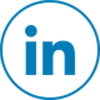Effective patient-doctor communication cannot be overstated, as it is critical to achieving better healthcare outcomes. Clear, open, and honest communication can help patients feel more comfortable discussing their symptoms and concerns. In turn, doctors can better understand their needs and help them make a tailored treatment plan.
This said, physicians and support staff need to be intentional about adopting strategies to improve these interactions. This blog will cover all the basic things you need to know about patient-doctor communication and the best ways to enhance it using technology.
Table of Contents
How to Improve Patient-Doctor Communication
Improving doctor-patient communication requires effort and attention from both parties. Here are some tips that can help:
Active listening
As a healthcare provider, you need to make a conscious effort to listen actively and attentively to your patients. Give them enough time to express their concerns and needs fully. As much as possible, never interrupt them.
Use plain language
Using medical jargon is not only confusing, but it can also intimidate patients. It is best to use plain and easily understood language, especially when explaining their condition and treatment plan. If there are things that are quite difficult to explain in layman’s terms, provide an example or similar scenario.
Nonverbal communication
Both doctors and patients should pay attention to their nonverbal communication, such as facial expressions, tone of voice, and body language. Nonverbal cues can often convey as much information as spoken words.
Empathy
Doctors should understand their patients’ perspectives and show empathy for their concerns. Patients should also understand their doctors’ perspectives and the constraints they may be working under.
Time management
One of the main reasons for ineffective communication between doctors and patients is the insufficient time allotted during the consultation. Healthcare providers should try only booking a few appointments daily to ensure each patient gets enough time.
Follow-up
Doctors should follow up with their patients after appointments to ensure they understand their treatment plans and address any lingering concerns. Patients should also follow through on their treatment plans and communicate any changes or issues to their doctors.
Cultural competence
You should be aware of your patients’ cultural backgrounds and consider how cultural factors may impact their health beliefs and communication preferences. Patients should also feel comfortable sharing their cultural backgrounds and preferences with their doctors.
Patient education
Providing educational materials like brochures or reliable online resources. Doing so helps patients better understand their health conditions and treatment options. It also encourages a healthy collaborative relationship.
Collaborative decision-making
You and your patients should work closely together to make decisions about their healthcare, taking into account the patient’s values, preferences, and goals. This approach can build trust and promote patient engagement in their care.
Use technology
Doctors can use technology such as patient portals, telehealth platforms, and mobile health apps to communicate with patients more effectively. Patients can also use technology to track their health data and communicate with their doctors in real time.

Best Online Tools for Improving Patient-Doctor Communication
There are several online tools available that can help to improve patient-doctor communication:
Patient portals
Patient portals are secure online platforms that allow patients to access their medical records, schedule appointments, request prescription refills, and communicate with their healthcare providers. Many healthcare providers offer patient portals to enhance doctor-patient communication and provide more personalized care.
This platform typically requires patients to create an account, which allows them to access their medical records and other personal health information. They can then use the portal to view lab results, medications, and additional health information relevant to their care. This can help patients better understand their health status and work with their healthcare providers to develop treatment plans tailored to their unique needs.
Telehealth platforms
Telehealth platforms have become increasingly popular in recent years as more and more patients seek convenient, remote access to healthcare services. This tool lets patients and healthcare providers have virtual video conferencing consultations.
These platforms offer several benefits, including increased access to care. Using these tools, you can provide better care for patients who have difficulty traveling to appointments, such as those living in remote areas or with mobility issues. They allow healthcare providers to offer services to a wider range of patients, regardless of location.
Electronic health records (EHRs)
EHRs are digital versions of patients’ medical records stored and accessed electronically. They enable healthcare providers to access and share patient information more efficiently, improving doctor-patient communication and coordination of care.
EHRs can contain a wide range of patient information, including medical histories, test results, medication lists, and care plans. Healthcare providers can access this information across different locations, allowing for seamless coordination of care.
Electronic signature tools
Electronic signature tools are software that enables patients to sign consent forms, treatment plans, and other healthcare-related documents electronically, eliminating the need for paper-based signatures. These tools are becoming increasingly popular in healthcare settings as they offer several benefits over traditional paper-based signature methods.
eSignature tools can improve the patient experience by offering a more convenient and streamlined way to sign documents. Patients can sign documents from their device, at a time and location that is convenient for them, rather than having to visit a healthcare facility or mail paper forms.
Improve Patient Doctor Communication With Fill
Effective patient to doctor communication results in fewer missed appointments, better patient outcomes, and higher patient satisfaction. Prevent communication bottlenecks by managing and automating patient communications with Fill.
Fill is one of the best tools that enable a secure and more efficient method for filling out forms and consent, making it easy for patients to provide information to their providers, clinics, front offices, and care teams.
Get a free demo to see how you can provide the best care to your patients.










